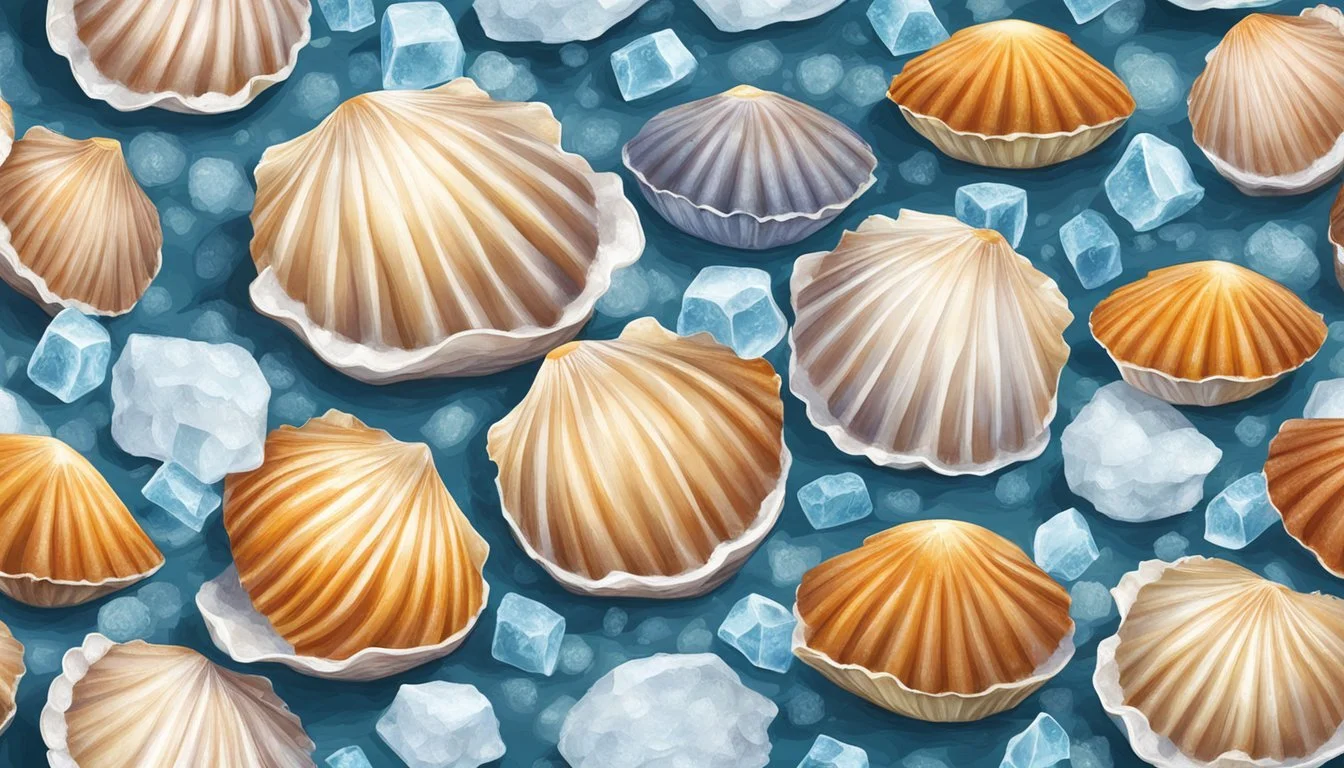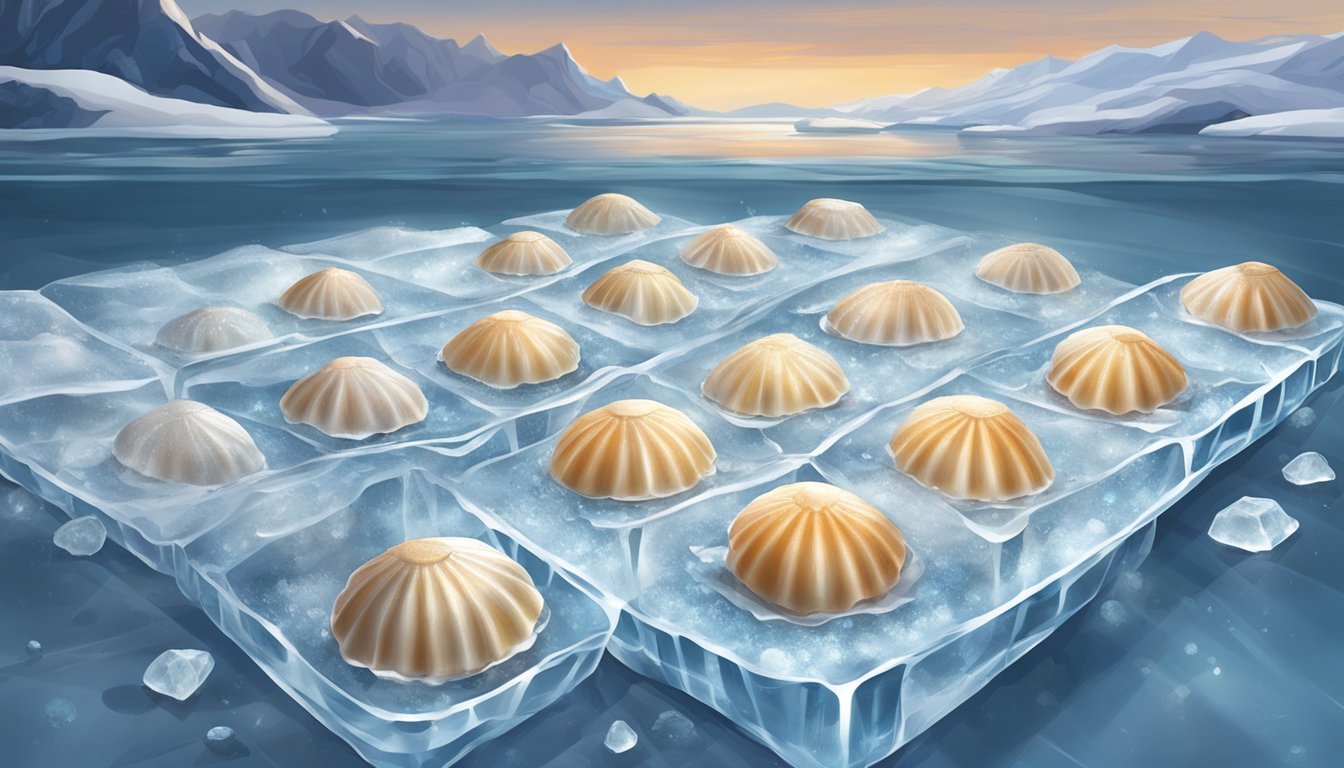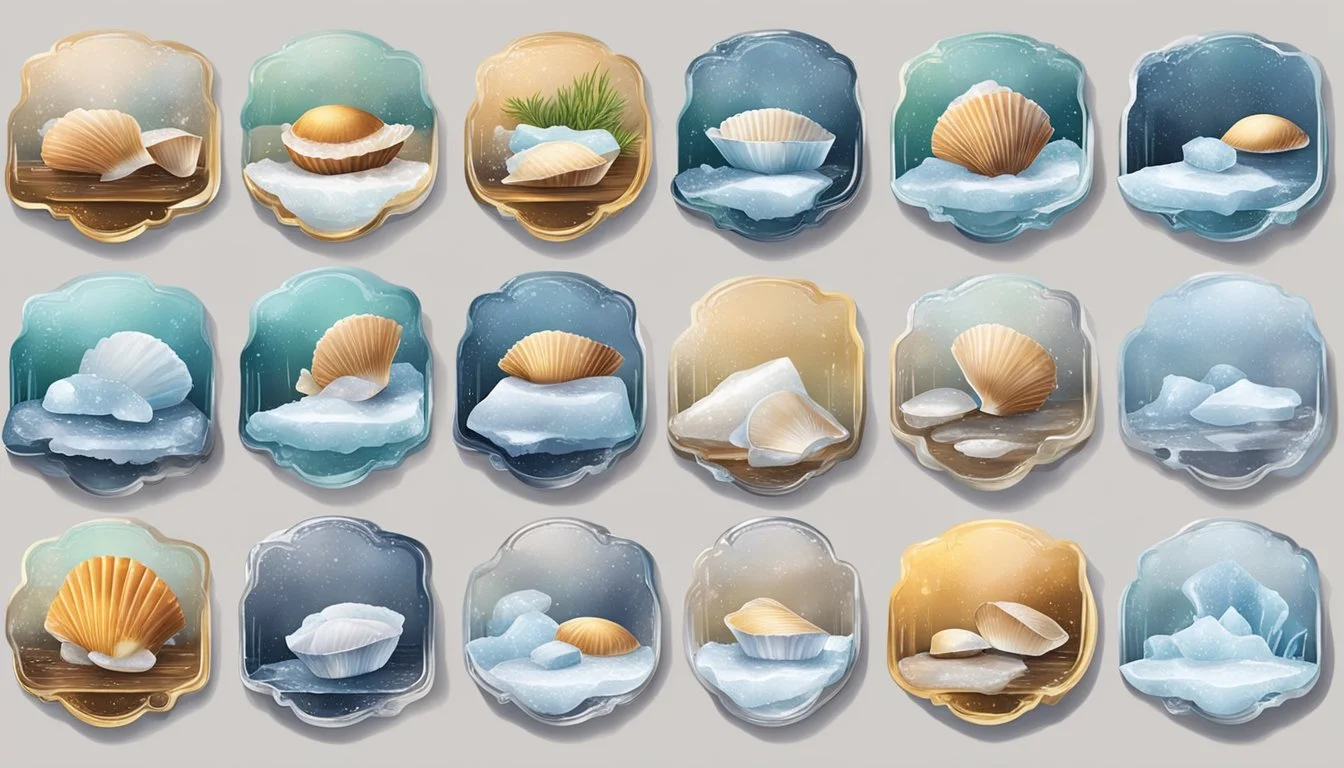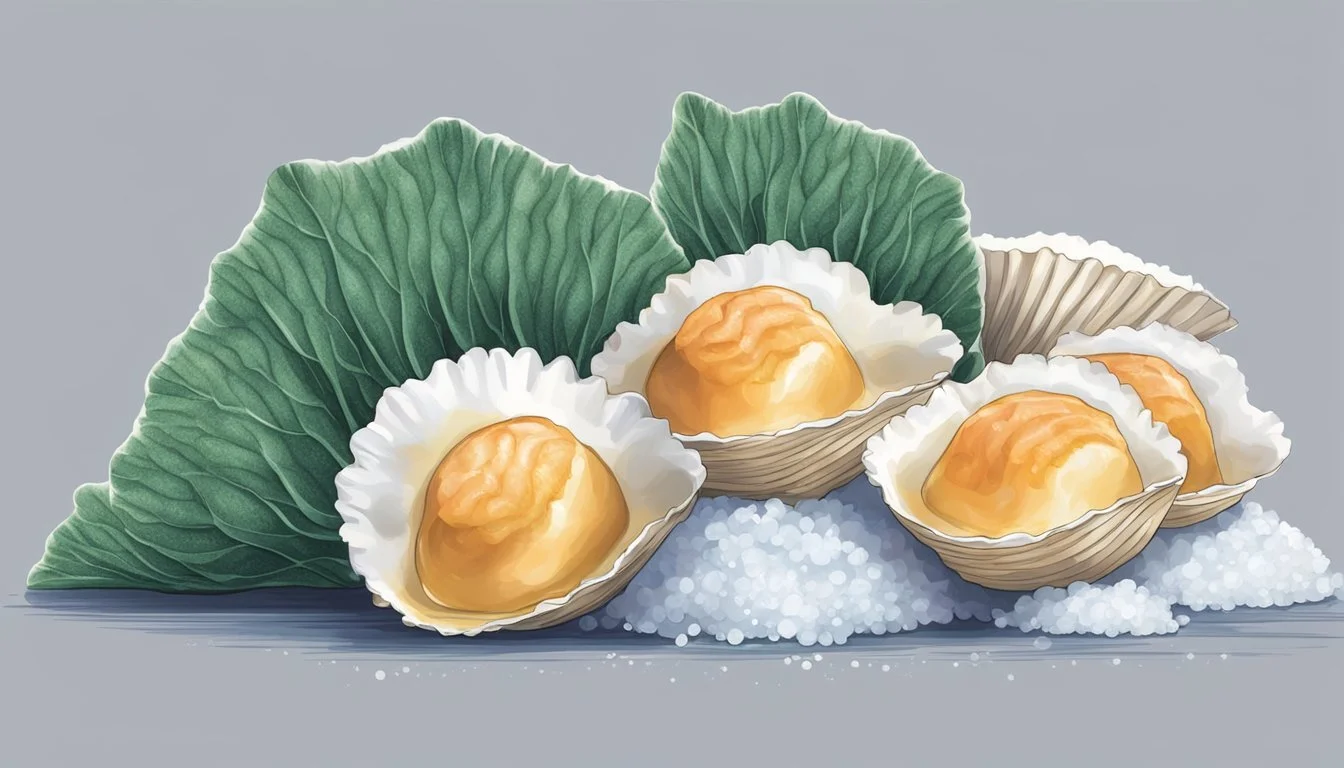Fresh vs Frozen Scallops: A Guide to Quality, Taste, and Cooking Performance
Scallops are a delectable seafood option enjoyed by many. When it comes to purchasing these tender mollusks, consumers often face a choice between fresh and frozen varieties. Both options have their merits, and understanding the differences can help make the best selection for your culinary needs.
Fresh scallops offer a mild flavor and firm, plump texture, while frozen scallops tend to have a stronger taste and firmer consistency. This distinction in taste and texture can impact the overall dining experience. Fresh scallops are typically available seasonally, from spring to fall, whereas frozen scallops provide year-round accessibility.
The preparation and storage of scallops also differ between fresh and frozen options. Fresh scallops require prompt consumption, while frozen scallops can be conveniently stored for longer periods. Frozen scallops are often vacuum-packed, which helps preserve their quality and appearance. When purchasing scallops, it's important to use your senses and select high-quality specimens, regardless of whether they're fresh or frozen.
Understanding Scallops
Scallops are prized shellfish available in several varieties, each with unique characteristics. These bivalve mollusks have fascinating anatomy and lifecycles that influence their culinary qualities.
Different Types of Scallops
Sea scallops are large, sweet-flavored shellfish found in deep, cold ocean waters. They typically measure 1.5 to 2 inches in diameter. Bay scallops are smaller, about 1/2 inch across, with a tender texture and sweeter taste. They live in shallow coastal waters.
Calico scallops are tiny, measuring only 1/2 inch wide. They have a delicate flavor and chewy texture. King scallops, found in European waters, are large and meaty with a rich taste.
Diver scallops refer to hand-harvested sea scallops. This method ensures minimal damage to the ocean floor and often results in higher quality scallops.
Scallop Anatomy and Lifecycle
Scallops have two shells connected by a hinge, with a large adductor muscle used for swimming. This muscle is the edible part consumers enjoy. Scallops have up to 200 eyes along their mantle and can swim by clapping their shells together.
Scallops are hermaphrodites, producing both eggs and sperm. They typically spawn in spring and summer. Larvae drift as plankton for several weeks before settling on the seafloor.
Adult scallops attach to surfaces using byssal threads or rest freely on the ocean bottom. They feed by filtering plankton and organic matter from the water. Scallops can live up to 20 years, though most are harvested much younger.
Fresh Scallops
Fresh scallops offer a delicate sweetness and tender texture prized by seafood lovers. Their quality and flavor are at their peak when properly handled from ocean to plate.
Characteristics of Fresh Scallops
Fresh scallops have a translucent, slightly glossy appearance with a firm texture. Their color ranges from pale ivory to light pink. When gently pressed, fresh scallops should spring back quickly.
The aroma should be mild and sweet, reminiscent of the ocean. Any strong fishy smell indicates the scallops are past their prime.
Fresh scallops have a naturally sweet flavor and a tender, buttery texture when cooked properly. Their taste is often described as delicate and slightly briny.
How to Purchase Fresh Scallops
Look for "dry" scallops, which haven't been treated with phosphates. These preservatives can affect flavor and texture.
Choose scallops that are uniform in size for even cooking. Avoid those with excessive liquid in the container, as this can indicate improper handling or age.
Buy from reputable seafood markets or fishmongers. Ask when the scallops were harvested and where they came from to ensure freshness.
Inspect scallops closely before purchase. Avoid any with discoloration, sliminess, or an off-putting odor.
Best Practices for Storing Fresh Scallops
Store fresh scallops in the coldest part of the refrigerator, typically the bottom shelf towards the back. Keep them at 32°F to 38°F (0°C to 3°C).
Place scallops in a colander over a bowl and cover with ice. This allows melting ice to drain away, preventing the scallops from sitting in water.
Use fresh scallops within 1-2 days of purchase for optimal quality. If you can't cook them immediately, consider freezing for later use.
When freezing, place scallops in a single layer on a baking sheet until solid, then transfer to an airtight container or freezer bag.
Frozen Scallops
Frozen scallops offer convenience and extended shelf life. They can be a practical option for seafood lovers who don't have regular access to fresh catches.
Pros and Cons of Frozen Scallops
Frozen scallops have several advantages. They're readily available year-round and often more affordable than fresh varieties. Their long freezer life makes them ideal for stocking up.
However, freezing can affect texture and flavor. Ice crystals that form during freezing may slightly alter the scallop's structure. This can result in a less tender texture compared to fresh scallops.
Some frozen scallops are treated with a phosphate solution. This process helps retain moisture but can impact taste and texture. It's important to check labels for any added solutions.
How to Properly Freeze Scallops
To freeze scallops at home, start with fresh, high-quality seafood. Rinse the scallops and pat them dry thoroughly.
Place the scallops in a single layer on a baking sheet lined with parchment paper. Freeze until solid, about 2 hours.
Transfer the frozen scallops to a plastic zipper bag or airtight container. Remove as much air as possible to prevent freezer burn.
Label the container with the date and use within 3-6 months for best quality.
Thawing and Preparing Frozen Scallops
Thaw frozen scallops in the refrigerator overnight for best results. For quicker thawing, place them in a sealed plastic bag and submerge in cold water for about 30 minutes.
Never use warm or hot water to thaw scallops, as this can promote bacterial growth.
Once thawed, pat the scallops dry with paper towels. This step is crucial for achieving a good sear when cooking.
Cook thawed scallops promptly. They're versatile and can be grilled, pan-seared, or baked. Avoid overcooking to preserve their tender texture.
Cooking Techniques
Scallops can be prepared using various methods to achieve delicious results. Each technique brings out unique flavors and textures in these delicate seafood morsels.
Pan Searing Scallops
Pan searing is a popular method for cooking scallops. Use a non-stick pan or well-seasoned cast iron skillet over medium-high heat. Pat the scallops dry with paper towels to remove excess moisture.
Add a small amount of oil or butter to the hot pan. Place the scallops in the pan, leaving space between each one. Cook for 2-3 minutes on each side until golden brown.
Avoid moving the scallops during cooking to achieve a perfect sear. The result is a crispy exterior with a tender, juicy interior. Season with salt and pepper just before serving.
Grilling Scallops
Grilling imparts a smoky flavor to scallops. Preheat the grill to medium-high heat. Brush the scallops with oil and season with salt and pepper.
For easier handling, thread the scallops onto skewers. Place them on the grill and cook for 2-3 minutes per side. The scallops should develop light grill marks and turn opaque.
Be careful not to overcook, as scallops can quickly become tough. Brush with melted butter or a marinade during grilling for added flavor.
Baking and Broiling Scallops
Baking and broiling are excellent options for cooking scallops indoors. Preheat the oven to 425°F (218°C) for baking or set it to broil.
For baking, place seasoned scallops in a baking dish. Add a splash of white wine or lemon juice. Bake for 12-15 minutes until cooked through.
To broil, place scallops on a lined baking sheet. Brush with melted butter and seasonings. Broil for 3-4 minutes, watching closely to prevent burning.
Both methods result in tender, flavorful scallops. Garnish with fresh herbs before serving for a burst of color and flavor.
Health and Nutrition
Scallops offer a range of nutritional benefits while being low in calories. They provide essential nutrients that support various bodily functions and overall well-being.
Nutritional Content
Scallops are an excellent source of lean protein. A 3-ounce (85-gram) serving contains about 20 grams of protein and only 1 gram of fat. This serving size provides approximately 100 calories.
Scallops are rich in vitamin B12, which is crucial for nerve function and red blood cell formation. They also contain selenium, a mineral important for thyroid health and immune function.
These shellfish offer a good amount of magnesium and potassium. These minerals play key roles in muscle and nerve function, as well as blood pressure regulation.
Health Benefits
Scallops are heart-healthy due to their omega-3 fatty acid content. These beneficial fats may help reduce inflammation and lower the risk of cardiovascular diseases.
The high-quality protein in scallops supports muscle maintenance and growth. It can aid in weight management by promoting feelings of fullness and boosting metabolism.
Scallops' low calorie and fat content make them a suitable option for those watching their weight. They can be incorporated into various diets without significantly increasing calorie intake.
The vitamin B12 in scallops is essential for brain health. It may help prevent cognitive decline and support overall neurological function.
Scallops in Gastronomy
Scallops are prized for their delicate flavor and versatile nature in culinary applications. Chefs and home cooks alike incorporate these tender morsels into a wide array of dishes, from elegant appetizers to hearty main courses.
Incorporating Scallops into Various Dishes
Scallops feature prominently in pasta dishes, adding a touch of luxury to creamy linguine or light angel hair preparations. Their sweet taste and tender texture complement risotto beautifully, creating a rich and satisfying meal.
For lighter fare, scallops shine in fresh salads, providing a protein-packed alternative to traditional options. As appetizers, they make elegant bite-sized morsels when wrapped in bacon or served on small toasts.
Grilled scallops take center stage in seafood platters, while pan-seared versions often serve as the star of the plate in fine dining establishments. Their quick cooking time makes them ideal for stir-fries and quick weeknight meals.
Pairing Scallops with Other Ingredients
Butter is a classic pairing for scallops, enhancing their natural sweetness and creating a luscious sauce. White wine adds depth and acidity, balancing the richness of the scallops.
Leafy greens like spinach provide a nutritious contrast and soak up flavorful pan juices. Citrus fruits, particularly lemon, brighten scallop dishes with their zesty notes.
Mild herbs such as chives, parsley, and tarragon complement scallops without overpowering their delicate flavor. For texture, crispy pancetta or prosciutto offer a savory crunch.
Creamy sauces made with garlic, shallots, and cream elevate scallops in sophisticated dishes. In Asian-inspired recipes, ginger, soy sauce, and sesame oil create bold flavor profiles that enhance the scallops' natural taste.
Purchasing and Sustainability
Selecting high-quality scallops and considering sustainability are crucial aspects of responsible seafood consumption. These factors impact both the dining experience and the marine ecosystem.
Selecting High-Quality Scallops
Look for dry-packed scallops, which haven't been treated with preservatives. These offer superior flavor and texture. Avoid wet-packed options, which often contain additives that increase water weight.
Fresh scallops should have a sweet, ocean-like smell without any fishy odors. Their color should range from pale pink to light beige. Avoid scallops with an orange or brownish tint.
Size matters in scallop selection. Larger sea scallops are often preferred for their meatier texture and versatility in cooking methods.
When buying frozen scallops, choose individually quick-frozen (IQF) varieties. These maintain better quality and are easier to portion.
Sustainable Sourcing and Environmental Impact
Opt for wild-caught scallops from well-managed fisheries. U.S. Atlantic sea scallops are a sustainable choice, certified by the Marine Stewardship Council.
Farmed scallops can be a sustainable alternative. Look for those raised using responsible aquaculture practices that minimize environmental impact.
Consider the origin of imported scallops. Some foreign fisheries may not adhere to strict sustainability standards.
Support local fisheries when possible. This reduces transportation emissions and supports coastal communities.
Check for eco-certifications like the Aquaculture Stewardship Council (ASC) or Best Aquaculture Practices (BAP) when buying farmed scallops.
Common Concerns
When considering fresh versus frozen scallops, several issues often arise regarding quality and processing. These factors can significantly impact the taste, texture, and overall dining experience.
Addressing Freshness and Quality Issues
Fresh scallops are prized for their delicate texture and sweet flavor. However, they're highly perishable and can develop a fishy odor or stale taste if not handled properly. Bacteria growth is a risk, especially if the scallops aren't kept at the right temperature.
Frozen scallops can maintain quality for longer periods. When properly frozen, they lock in freshness and minimize bacterial growth. However, improper freezing or thawing can lead to texture changes, making them less plump or slightly tougher.
Quality issues can arise in both fresh and frozen varieties. It's crucial to purchase from reputable sources and check for signs of spoilage before cooking.
Understanding Additives and Processing
Frozen scallops may contain additives to preserve quality and extend shelf life. Some are treated with a phosphate solution to retain moisture and prevent freezer burn.
While these additives are generally considered safe, they can affect taste and texture. Processed scallops might have a slightly different flavor profile compared to untreated ones.
Fresh scallops typically don't contain additives but may be treated to extend their shelf life in stores. It's important to read labels and ask questions about processing methods when purchasing.
Some consumers prefer additive-free scallops for a more natural taste. Others find the convenience and consistency of processed frozen scallops beneficial for certain recipes.
The Bottom Line
Fresh and frozen scallops each have their merits. Fresh scallops offer superior texture and flavor when consumed quickly after harvest. Their delicate sweetness and tender bite are unmatched.
Frozen scallops provide convenience and year-round availability. Modern flash-freezing techniques help preserve quality and nutrients. When thawed properly, frozen scallops can closely rival fresh ones in taste and texture.
Quality varies between brands for both fresh and frozen options. Reputable sources and proper handling are crucial factors. Price often correlates with scallop size rather than fresh or frozen status.
For immediate consumption, fresh scallops are ideal. Frozen scallops work well for meal planning and spontaneous cooking. Both can yield excellent results when prepared correctly.
The choice ultimately depends on individual priorities. Fresh scallops suit those prioritizing peak flavor and texture. Frozen scallops cater to convenience and budget-conscious buyers. Either option can satisfy seafood lovers when selected and prepared with care.







